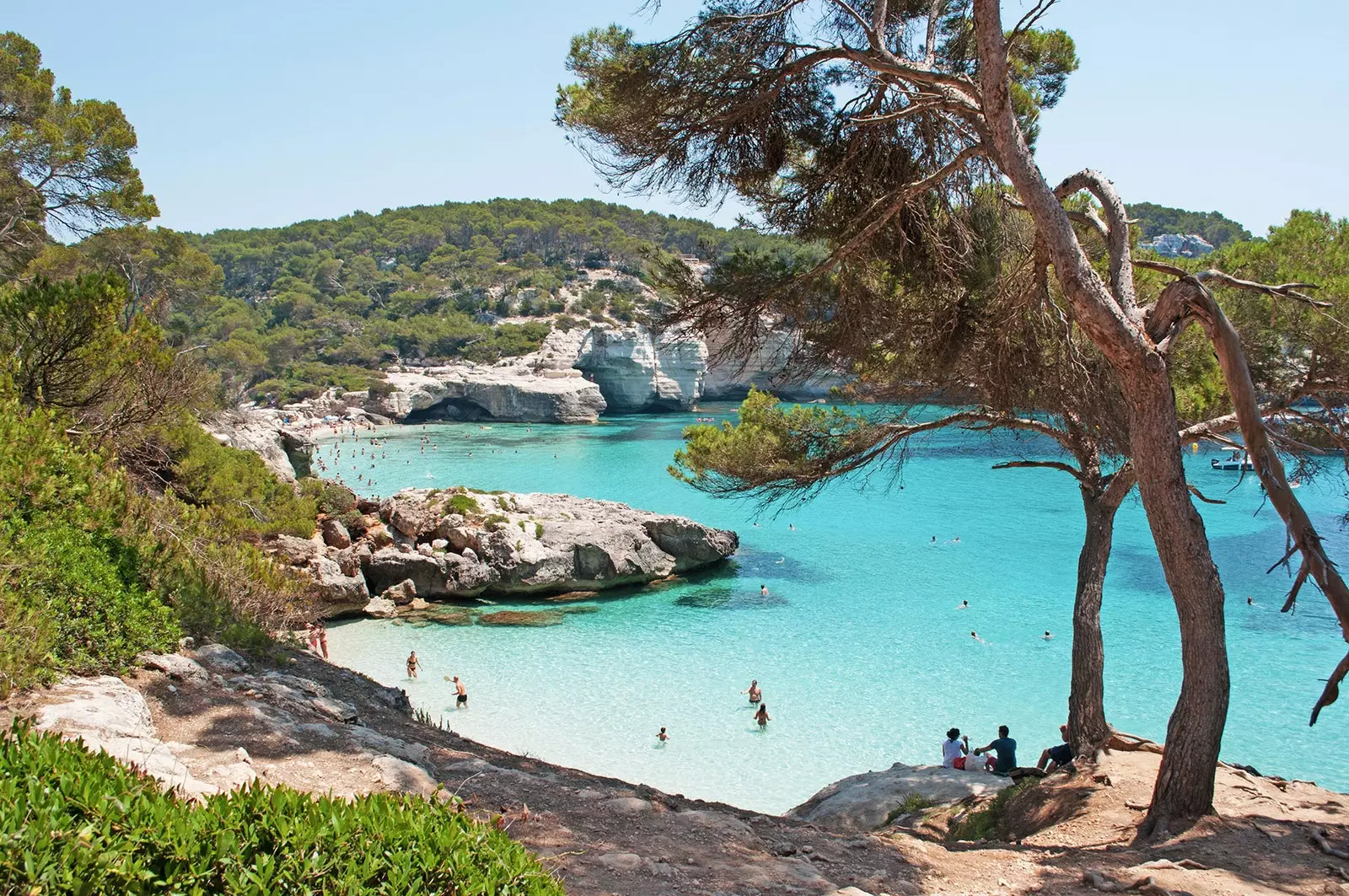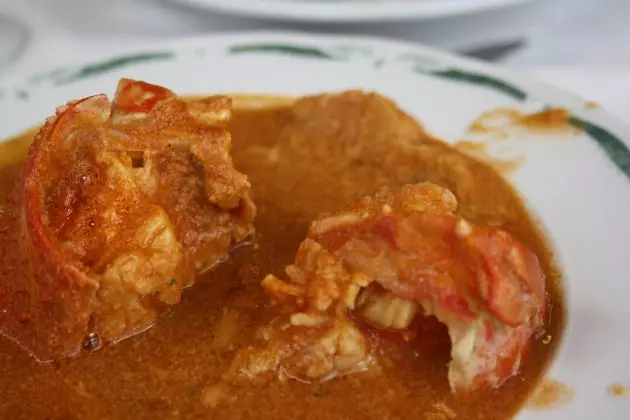Gastronomic Menorca is always an interesting roadmap to follow. After all, the island is a traditional destination for gastronomic tourism thanks to its seafood, its cheeses or emblematic dishes such as Lobster stew.
But in recent years, in addition, there is a revolution which makes it the perfect place to discover gastronomy green, sustainable and up-to-date.
You have to return to Menorca whenever you have the opportunity. And you have to do it, in addition to its incredible coves, its landscapes that are hard to forget or that succession of charming hotels that dot the entire island, its gastronomy.

Calas Mitjana and Mitjaneta.
Despite being relatively small in size, the island is a constant surprise thanks to the diversity of its products and a traditional seafood cuisine in which dishes such as lobster stew stand out, products such as Mahón cheeses , cured meats such as cuixot and drinks such as gin and ointment , already converted into icons of a way of life.
And even so, despite the topics and of the most popular recipes, Menorca does not stop reinventing itself, shaping attractive proposals that make them possible new routes with gastronomy as the axis , a different way to discover the island and its products, leaving behind preconceived ideas.

Lobster stew.
SON FELIP: THE REGENERATIVE PARADISE
North of Ferreries The least populated area of the island extends, a succession of hills, farms and forests among which a roof is rarely glimpsed. The limit is set by the rocky coast, with mythical sandbanks such as Cala del Pilar, Cala Fontanelles or Algaiarens, which are worth the effort to get to.
It is there, between some coves and others, at the foot of Sa Muntanya Mala, where one of those well-kept secrets that the island harbors and that a former CEO of the Desigual brand has turned into a unique project is hidden.
Son Felip (Camí Alfurí de Baix) is a farm and rural accommodation , but it is not just any farm. Son Felip is 1,000 hectares that include forests and plots dedicated to regenerative agriculture , a modality that takes the ecological one step further and that is not satisfied with not damaging the land, but rather seeks to heal it, recover its original state and improve its productivity.
In fact, cars do not enter Son Felip . The visits that are made park near the entrance and from there, walking or in electric vehicles, they enter this place that measures more than 10 kilometers from end to end that is managed under the guidelines of Francesc Font , one of the key names of current regenerative agriculture.
Here olive trees are grown , with which an excellent oil is produced, melons are planted and watermelons, there are almond trees, chickens are raised, honey is collected and an orchard of vegetables.
One thing feeds off the other. The chickens live in mobile chicken coops, designed in wood and integrated into the landscape, which are moved from one farm to another so as not to deplete the soil. With that, in addition, a field is fertilized that will later provide food for the horses.
Because the horses They are another of the signs of identity of this project, Menorcan horses with which you can take routes around the estate. But there is still more.
There, in the center of all this, there is a renovated house , one of the most discreet and exclusive corners of the island, which can be rented in its entirety or choosing between the main house and the lodge by the pool. In few places can you enjoy the calm, silence and horizons of the island like here.
A RESTAURANT WORTH A DEPARTURE
Not far to the south is It's Migjorn Gran . And there, at the entrance, almost unnoticed behind the white walls next to the road, is Ca Na Pilar (Av. de la Mar, 1), the restaurant of Víctor Lidón and Ona Morante.
Víctor worked together with Xavier Pellicer and Santi Santamaria in Catalonia, from whom he learned a cultivated and unprejudiced Mediterranean cuisine that adapts, in this mansion of more than 200 years, to the Minorcan imaginary and pantry.
The place is really cozy, the small patio is a luxury that is difficult to imagine from the outside and the menu is full of proposals such as Norway lobster tartar with marrow, red mullet stuffed with pig's trotters and persillade or the skate with Menorcan veal sweetbreads and leeks.
THE BAKERY SOUL OF MAHÓN
The main city in the south of the island is today, in addition to those many other things for which you have to visit it, a destination in full baking boiling . In recent times, some workshops have been added to its traditional offer that are worth exploring.
We can begin, by starting from the origins, by a classic like La Ceres (Carrer de l'Església, 8), a stone's throw from the church of Santa María, with the appearance of a bakery from another era and with its usual bread offerings.
and upload later towards the gate of Sant Roc because there, a little hidden behind the terraces and the atmosphere of the square, is one of the latest bakery additions on the island.
Pigalle (Carrer de Bastió, 4) occupies the premises of an old café in the city and specializes in French school breads. And yes, it is the perfect example of that new gastronomic Menorca.
There Emmanuele de Sola, a Parisian neo-baker in love with the island, he combines classic French bakery with local influences. It is worth going in, peeking into its glass-fronted workshop, asking questions and, if in doubt, chatting with Emmanuel, because this is one of those rare places with something special, a certain personality that fits in with the neighborhood and that you should get to know slowly. .
Something further, far from the most touristic Mahón, in a corner of Carrer des Negres , the Baker Charles Fountain he installed a wood-fired oven from which breads come out every day with that tough look from another time and that aroma that makes you feel at home.
Carlos is another one of those artisans who they carry bread in their blood , whom he is known for his loaves , but who is worth listening to, let him tell us the hows and whys of each piece.
From here, with a loaf -or two- under your arm, back to the center, perhaps you should stop in the traditional Sucrería Vallés (Carrer de Hannover, 19) to test its ensaimada in the traditional style of the island, fluffier and higher than those of Mallorca.
Or finishing, why not, with a stop to buy in the historic Mercat del Peix before returning home thinking about a dinner with good toasted bread, Son Felip organic oil and perhaps some red prawns from the market. But before, a Negroni on the terrace of the Augustine , that good things must be enjoyed and here it is convenient to sit down and let Mahón pass before us without haste.
